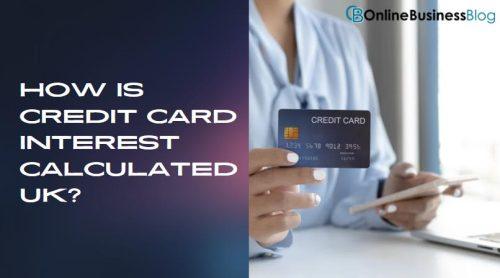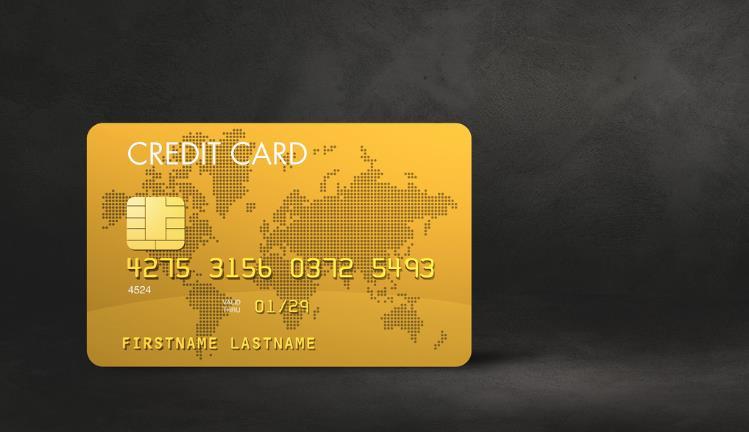Post Contents
The History of Credit Cards
Credit cards have a long, complicated history. Originally, merchants would give customers credit in exchange for goods and services. Over time, the system evolved into what we know today: consumers borrow money from a bank in order to purchase items or withdraw cash from an ATM.
The interest rate on a credit card is calculated based on the amount of money you borrow and how long you keep the card open. The longer you keep your card open, the higher your interest rate will be. Credit cards also have monthly fees and other charges that can add up quickly.
It’s important to be aware of these costs before you decide to use a credit card. There are many different types of credit cards available, so it’s important to do your research before choosing one. You should also make sure that you understand your credit score before applying for a card or using it in transactions. If you ever have trouble paying back your debt, don’t hesitate to contact your lender or credit card company.”
The Risks of Credit Card Interest
Credit card interest rates in the UK can be quite high, with some cards offering APRs of up to 29.99%. This means that if you don’t pay your credit card bill on time, interest will start to accrue and can quickly add up.
If you do manage to avoid paying interest, there is also the risk of being charged additional fees if your card is declined for purchase or if you’re hit with a late payment charge. In some cases, these fees can amount to as much as £30!
It’s important to understand the risks involved in using a credit card and to make sure that you are always aware of your monthly obligations so that you don’t end up owing money on top of the interest you have already accrued.
How is Credit Card Interest Calculated UK?
If you are using credit card, you should know how credit card works. In the UK, credit card interest is calculated using a formula that takes into account both the annual percentage rate (APR) and the length of the credit agreement. The APR is a figure that reflects how much interest will be charged on a particular loan over the course of a year. The longer the agreement, the higher the APR will be. The APR is based on two factors: how much you currently owe on your card and how long it has been since you last paid off your balance.
This means that if you deposit money onto your card every month, your APR will be lower than if you only pay off your balance once a year. Your current balance also affects your APR because lenders tend to charge more for loans with high balances. The other factor that affects your interest rate is how long it’s been since you’ve paid off your entire balance. If it’s been less than six months, then your interest rate is assessed at a prorated rate.

If it’s been more than six months but less than 12 months, then your interest rate is assessed at 2% multiplied by the outstanding balance on your card divided by £1,000 (£6 per month). If it’s been more than 12 months but less than 18 months, then your interest rate is assessed at 2% multiplied by the outstanding balance on your card divided by £2,000 (£12 per month).
If it’s been more than 18 months but less than 24 months, then your interest rate is assessed at 2% multiplied by the outstanding balance on your card divided by £3,000 (£18 per month). If it’s been more than 24 months but less than 30 months, then your interest rate is assessed at 2.5% multiplied by the outstanding balance on your card divided by £4,000 (£24 per month).
Why Does Interest Matter?
The interest rate on a credit card can vary quite a bit from country to country, and this is due to the different interest rates that are used in calculating the interest amount. In the UK, for example, there are three main types of interest rates that are used: basic interest rate, margin interest rate, and cash advance interest rate.
Basic interest rate refers to the percentage of the outstanding balance that is paid in interest each month. For example, if you borrow £1,000 with a basic interest rate of 12%, then every month you will pay £12 in interest on top of your original loan amount.
Margin interest rate refers to the increase in the principal amount of your loan each month as a result of adding more borrowed money (the ‘margin’) onto it. For example, if you borrow £1,000 with a margin Interest Rate of 25%, then every month you will pay £25 in additional interest on top of your original loan amount. The total amount you will pay back over the course of the loan will be increased by an extra £250 ($375).
Cash advance Interest Rate refers to the percentage charged on loans that are used for short-term financial needs such as paying for unexpected bills or buying groceries. This type of loan has higher fees and APR (interest rates) than other types of loans because lenders require a higher security deposit to protect themselves from being defrauded or from not being able to get their money back if the borrower defaults on the loan.
Tips for Maximizing Your Credit Card
If you’re in the UK, credit card interest rates can be high, especially if you carry a balance from month-to-month. Here are some tips to help minimize your credit card interest payments: Pay your bills on time. This will reduce the amount of money that your credit card company has to charge you for interest.
Keep a low balance on your card. If you have a low balance, your credit card company won’t have as much money to charge you for interest and it may even reduce or end your monthly interest charges. Ask about 0% introductory offers.

Many credit cards offer 0% introductory rates on purchases for a limited time period, which can help you get started repayment plan on lower interest rate debt. Maximizing Your Credit Card Interest Payments in the UK If you’re carrying a balance from month-to-month and your credit card interest rates are high.
Here are some tips to help minimize your payments:
Pay your bills on time – this will reduce the amount of money that your credit card company has to charge you for interest.
Keep a low balance on your card – if you have a low balance, your credit card company won’t have as much money to charge you for interest and it may even reduce or end your monthly interest charges.
Ask about 0% introductory offers – many credit cards offer 0% introductory rates on purchases for a limited time period, which can help you get started repayment plan on lower interest rate debt.
How to Avoid High Credit Card Interest Rates?
If you’re thinking of getting a new credit card, there are a few things to keep in mind. One of the most important is to avoid high credit card interest rates. In the UK, credit card interest rates can range from around 8% to over 24%. That’s a lot of extra money that can add up fast.
Here are some tips on how to avoid high credit card interest rates:
1. Keep your spending under control
The best way to avoid high credit card interest rates is to keep your spending under control. If you know you can’t afford to spend more than you have each month, then you won’t need as much borrowings against your future earnings in order to pay off your credit card bills on time. This will help keep your borrowing costs down and save you money in the long run.
2. Don’t carry too much debt
Another key factor in avoiding high credit card interest rates is not carrying too much debt. If you have a large amount of outstanding debt that’s financing expensive items such as cars or property, it will be harder for you to get lower interest rates on your cards if you need to borrow money. Try to aim for a balance between having a few low-interest-rate debts and fewer high-interest-rate debts so that it’s easier for you repay what you owe without incurring hefty penalties.
3. Stick with reputable lenders
When looking for a new credit card, make sure to stick with reputable lenders. This means checking the interest rates and terms of the card before you apply. Make sure the lender is accredited by the Better Business Bureau (BBB) and that it has a good record of customer service.
4. Consider switching to a credit card with low-interest rates
If you can’t avoid high credit card interest rates, consider looking into credit cards with lower interest rates. These cards often come with an annual fee, but they may be worth it if you find yourself struggling to repay your debts on time. Make sure to compare rates and terms carefully before deciding which card to apply for.
Conclusion
In the UK, credit card interest is calculated using an APR (Annual Percentage Rate). This APR will vary depending on the credit card you are using and the terms of your loan. However, generally speaking, you will be charged interest on your outstanding balance from the date you first incurred it, plus an additional amount of interest each month.
FAQs on the how is credit card interest calculated UK
1. Do you pay interest on a credit card UK?
2. How is interest rate calculated UK?
3. What is the credit card interest rate in the UK?
4. How is the interest rate calculated on a credit card?
5. Is 17% interest on a credit card high?
6. Is credit card interest calculated monthly or yearly?
7. Do I get charged interest on my credit card if I pay in full?
Interest is added to your credit card debt if a monthly payment isn’t made by the due date. When you carry a balance from month to month, interest is charged daily based on what is known as the “Daily Periodic Rate” (DPR). Your daily interest charge is simply referred to as DPR.


